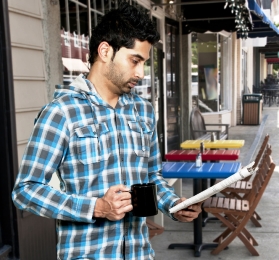24 November 2015
 Interviews with more than 1000 young Muslims aged over 15 years from Australia, the UK and the US, has shown that the way media represent Islam is one of their biggest complaints.
Interviews with more than 1000 young Muslims aged over 15 years from Australia, the UK and the US, has shown that the way media represent Islam is one of their biggest complaints.
Senior Research Fellow, Dr Nahid Afrose Kabir, from the University of South Australia’s International Centre for Muslim and non-Muslim Understanding says that her study participants found negative and stereotyped media reporting about people of the Islamic faith, unfair, frustrating and humiliating.
Author of three books looking at the young Muslim experience in Australia, Britain and the United States, Dr Kabir will be presenting at the 2nd Australasian Conference on Islam - Radicalisation & Islamophobia: Roots, Relationships and Implications in Religiously Diverse Societies - on November 30 to December 1 in Sydney.
Dr Kabir says young Muslim people are in the main well-socialised and active in work, sports, education and other activities, enjoying bi-cultural lifestyles in the countries they are born or settle.
“Overwhelmingly though, most of the people I interviewed felt the western media did them no favours,” Dr Kabir says.
“They feel that they are up against a wall of negativity promulgated by the media in all its forms but especially television and print. They believe the media makes all Muslim’s accountable for the actions of some Muslims in ways it never applies to Christians or other religions.”
Keen to unpack the truth behind these perceptions by young Muslims, Dr Kabir has been analysing print media in Australia between 2014 and 2015 – looking at two News Limited newspapers both in print and online – the national daily, The Australian and The Advertiser in South Australia.
And Dr Kabir says the results show there are variations in the intensity and sentiment of coverage.
“I found the Australian carried quite a bit more material regarding incidents of Muslim terrorism and stories about radicalisation or cultural difference such as wearing the burqa,” she says.
“The Advertiser seemed to have less coverage of these issues but also gentler headlines and was less likely to produce highly emotional or scary headlines.
“The differences may simply be to do with the fact that one is a regional and one is a national publication – the Australian does have a bigger agenda and also reports across national political agenda too.
“Whatever the reasons, our national daily newspaper in Australia is carrying a lot of stories focused on Islam and most of them are negative and the most negative stories are the most prominent.”
Dr Kabir says media stereotyping of all Muslims as extremist or even loosely implying that Muslims are radically different from any other people contributes to a depressing negativity for young Muslims.
“This kind of reporting alone will not radicalise a young person,” Dr Kabir says.
“But prolonged negativity from the media can contribute to the alienation of young, vulnerable or troubled people.
“It is hard for many people to imagine what it is like to see the group you belong to or identify with constantly vilified in all the news and media you see around you. Dominant groups in society will have little or no experience of this, but groups who have been marginalised do know what it is like.
“If we are to discourage radicalisation and support a vibrant and peaceful community, the media needs to play a wise and responsible role.”
Media contact: Michèle Nardelli office +61 883020966 mob 0418823673 email michele.nardelli@unisa.edu.au



